
Meet the Hickory Horned Devil Featured Creature
The hickory horned devil is our largest caterpillar. The regal moth, adult of the hickory horned devil. Host Plants Hickory horned devils are sometimes found on walnut, hickories, pecan, sweetgum, persimmon, and even sumac. The small caterpillars eat very small amounts of foliage, but the later stages consume considerable amounts of leaves.

hickory horned devil (Citheronia regalis)
A Hickory Horned Devil caterpillar in Anne Arundel Co., Maryland (7/24/2017). Photo by Anthony VanSchoor. Often referred to as the Hickory Horned Devil, Regal Moth caterpillars look very fierce with lots of spines and bold colors, but they are actually harmless. Photo by Richard Orr. Regal Moth caterpillar in Anne Arundel Co., Maryland (7/20.

Hickory Horned Devil metamorphoses into Regal Moth What's That Bug?
Description Adult The regal moth has a wingspan of 9.5 to 15.5 cm (Covell 2005). Females are larger than males. The forewings are gray to gray-green with orange veins and a row of seven to nine yellow spots near the distal margin. There also are single yellow discal and basal spots.
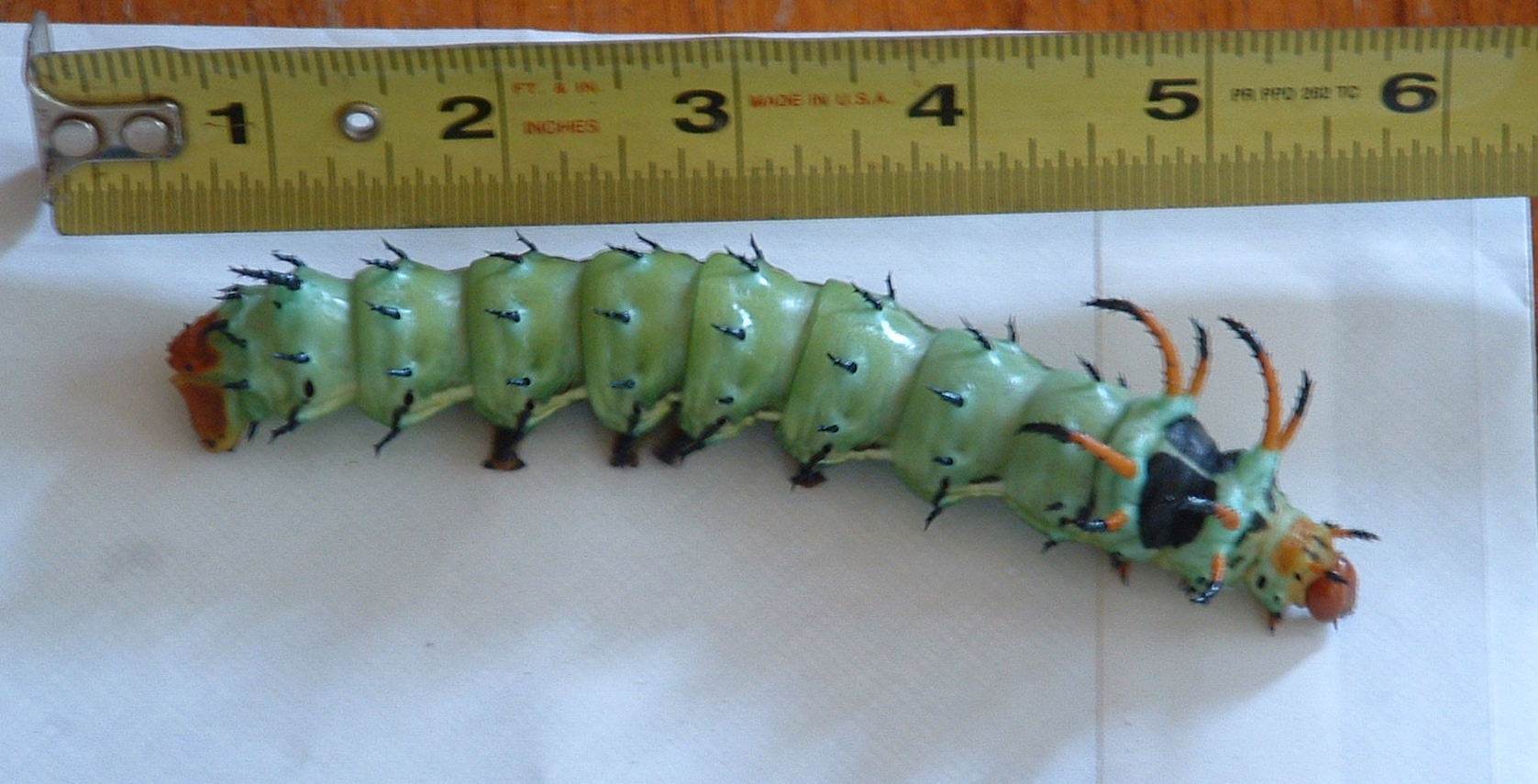
Hickory Horned Devil (Regal Moth) Walter Reeves The Gardener
Hickory Horned Devil - Regal Moth Ilse Knatz Ortabasi 12.7K subscribers Share 175K views 15 years ago Meet the largest caterpillar in North America! And watch it turn into a beautiful moth.
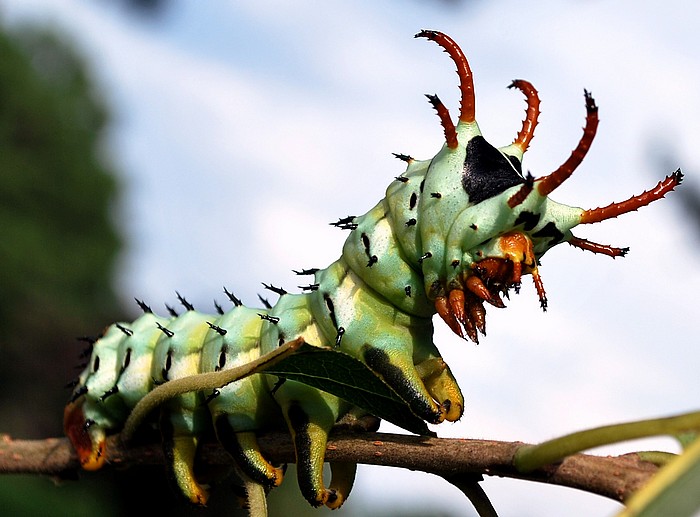
Meet the Hickory Horned Devil Featured Creature
Discover Nature Field Guide Regal Moth (Royal Walnut Moth; Hickory Horned Devil) Regal Moth (Royal Walnut Moth; Hickory Horned Devil) Scientific Name Citheronia regalis Family Saturniidae (giant silkworm and royal moths) Description Adult regal moths are enormous.

The regal moth (Citheronia regalis), also called the royal walnut moth
1 2 3 Summary 4 The regal moth ( Citheronia regalis ), also called the royal walnut moth, is a North American moth in the family Saturniidae. The caterpillars are called hickory horned devils. The adult (imago) has a wingspan of 3.75-6.1 in (9.5-15.5 cm). Life cycle 5
LatinLutheran The Resurrection of the Hickory Horned Devils
The Hickory Horned Devil is the caterpillar stage of the Regal Moth (Citheronia regalis), one of the largest moths in North America. This remarkable creature caught the eye of naturalists due to its dramatic appearance, featuring an array of long, spiky horns along its back. An Eye-Catching Sight: Physical Features of the Hickory Horned Devil
Hickory Horned Devil Rock Bridge Trees Pecan Trees
Moths do not eat. What Eats it: Birds and snakes. What You Need to Know: If you were asked to draw the scariest looking caterpillar you could think of, you would hardly do worse than come up with a picture of the Hickory Horned Devil. These caterpillars, which eventually turn into the strikingly beautiful Regal Moth, are the stuff of nightmares.
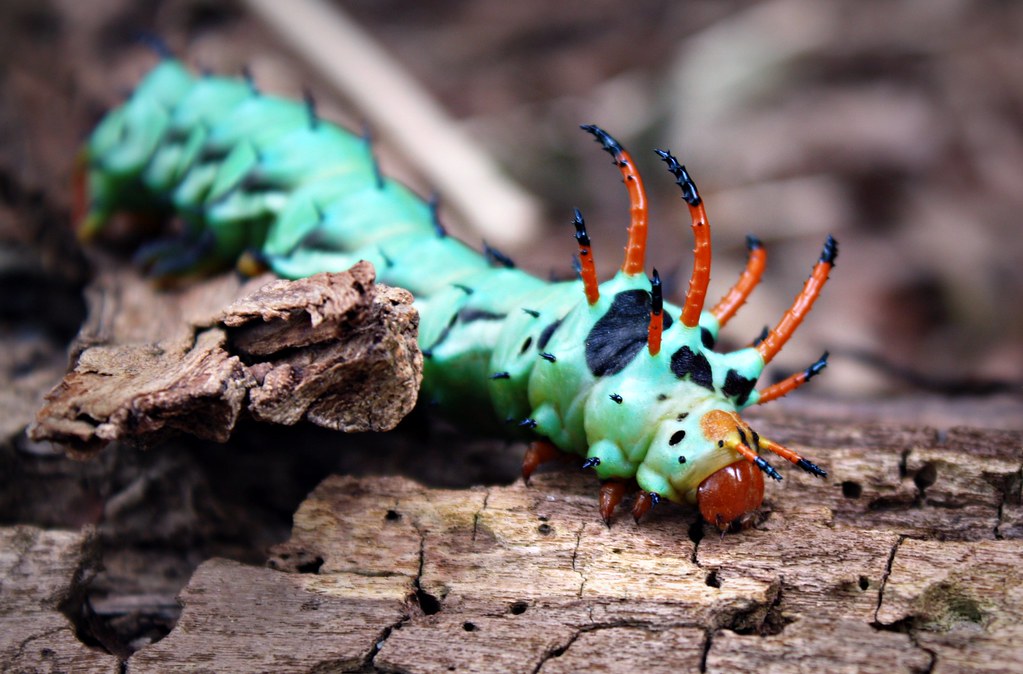
Hickory horned devil aka...regal moth or royal walnut moth
It's super interactive and fun - you can send me anything from video games, butterfly cages, books, energy drinks, breeding boxes, flower seeds for my butterflies, hot sauce, ramen noodles, silly.

Lowcountry outdoors Regal Moth and the Hickory Horned Devil
7706 Other Common Names Royal Walnut Moth Hickory Horned Devil (caterpillar) Synonyms and other taxonomic changes Citheronia regalis (Fabricius, 1793) original combination Bombyx regalis Fabricius, 1793; Ent. Syst. 3 (1): 436 syn. Citheronia saengeri Neumoegen, 1891 syn. Citheronia infernalis Strecker, 1883 * phylogenetic sequence #224200 Numbers

Springfield Plateau Regal Moth and the Devil
Royal Walnut Moth Citheronia regalis (Fabricius, 1793) | Butterflies and Moths of North America.

Hickory Horned Devil Rock Bridge Trees Pecan Trees
The largest adult moth in North America is the cecropia moth (Hyalophora cecropia), which also belongs to the lepidopteran Family Saturniidae. The closely related pine devil caterpillar (Citheronia sepulcralis) resembles the hickory horned caterpillar in shape, but is smaller and less colorful (Fig. 5). Pine devil caterpillars are found in.
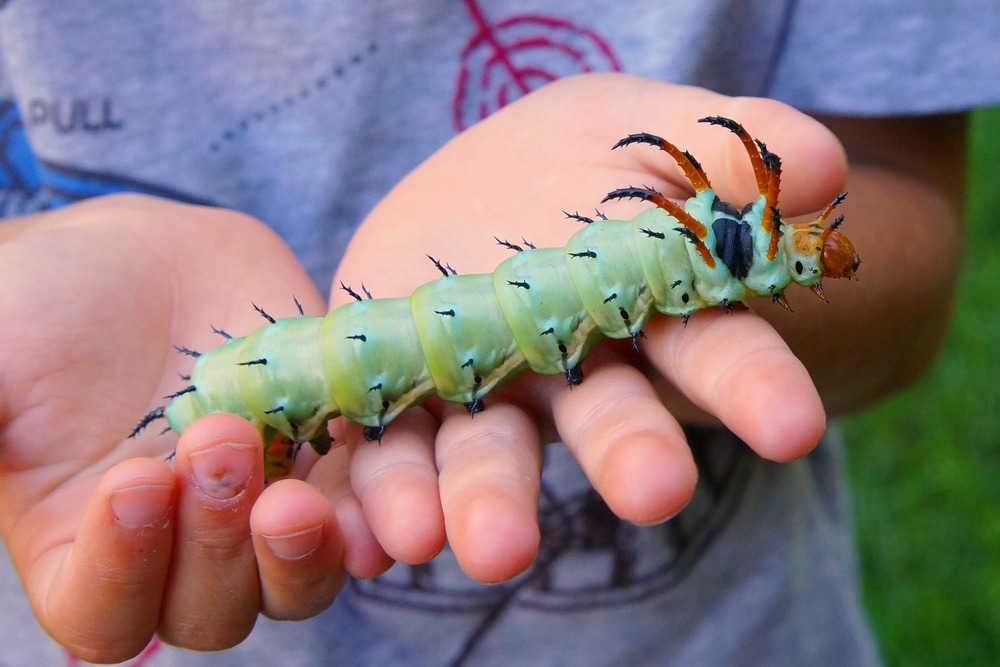
Meet the Hickory Horned Devil, a Fierce but Harmless Caterpillar Kids
Royal walnut moth, hickory horned devils ( as the larvae are called) Distribution: Several parts of the United States, including Pennsylvania, Massachusetts, Missouri, Texas, and Florida. The unique coloration and horned appearance of the larva in their last instar stage earns them the name hickory horned devil. Regal Moth Pictures. lh3.

Hickory Horned Devil / Regal Moth (Species SnapIt & MapIt Priorities
As you can see, a Hickory-horned Devil Caterpillar is huge, but it also has predators, which include birds (they are the primary food source for many birds), ladybird beetles, yellow jackets and human beings. But, so is the regal moth with a wingspan of 4-6 inches (and, females are larger than males). They are common southward but rare northward.
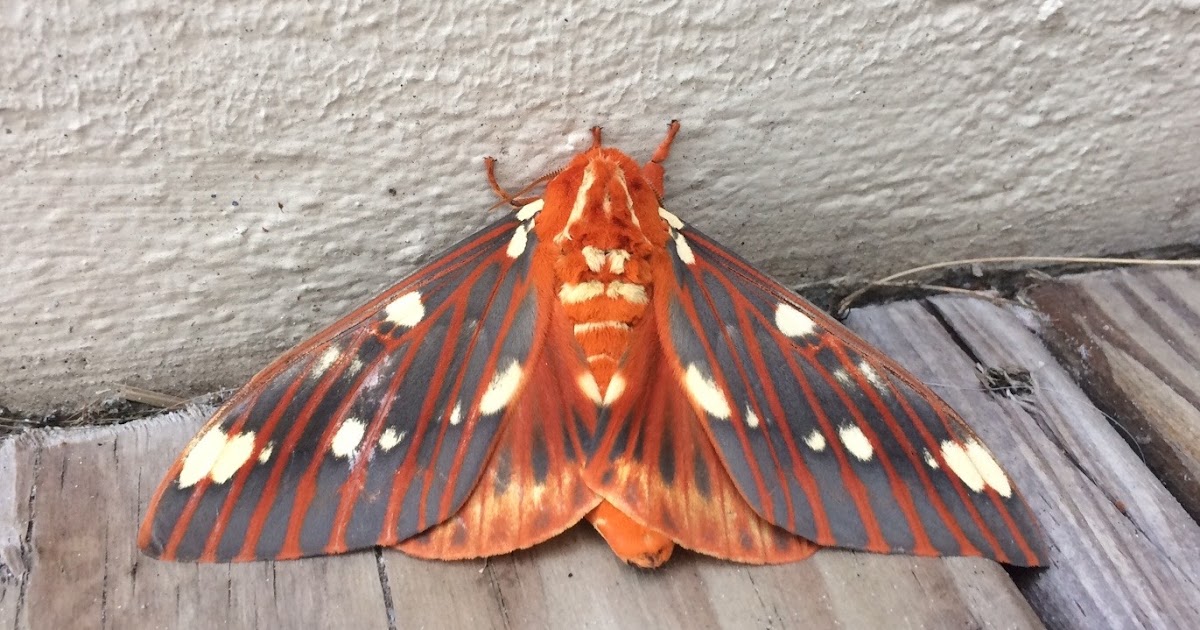
Lowcountry outdoors Regal Moth and the Hickory Horned Devil
Hickory horned devil caterpillar, of the regal moth, Citheronia regalis (Fabricius), showing size in relation to an adult human's hand. Photograph by Lyle J. Buss, University of Florida. The regal moth is a beautiful and fascinating member of our native fauna, and its larvae should not be killed.
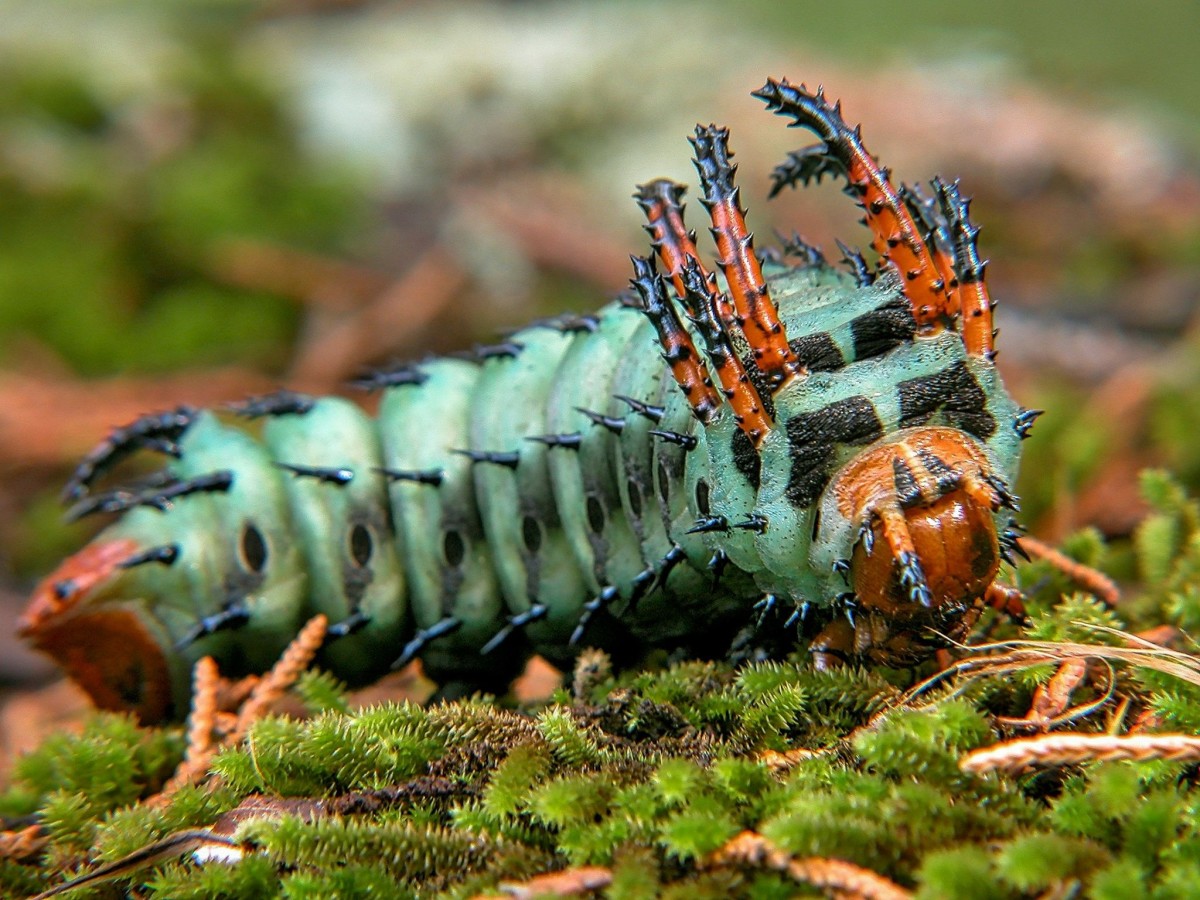
Hickory Horned Devil Caterpillars Ferocious Looking, but Harmless
Hickory horned devils (Fig. 1) are caterpillars of the regal moth or royal walnut moth, Citheronia regalis (Lepidoptera: Saturniidae). This native species can be found in much of the eastern half of the United States to Texas and the Midwest, but are more common in the south. Figure 1. Hickory horned devil (Clifford Andrews, Bugwood.org).
